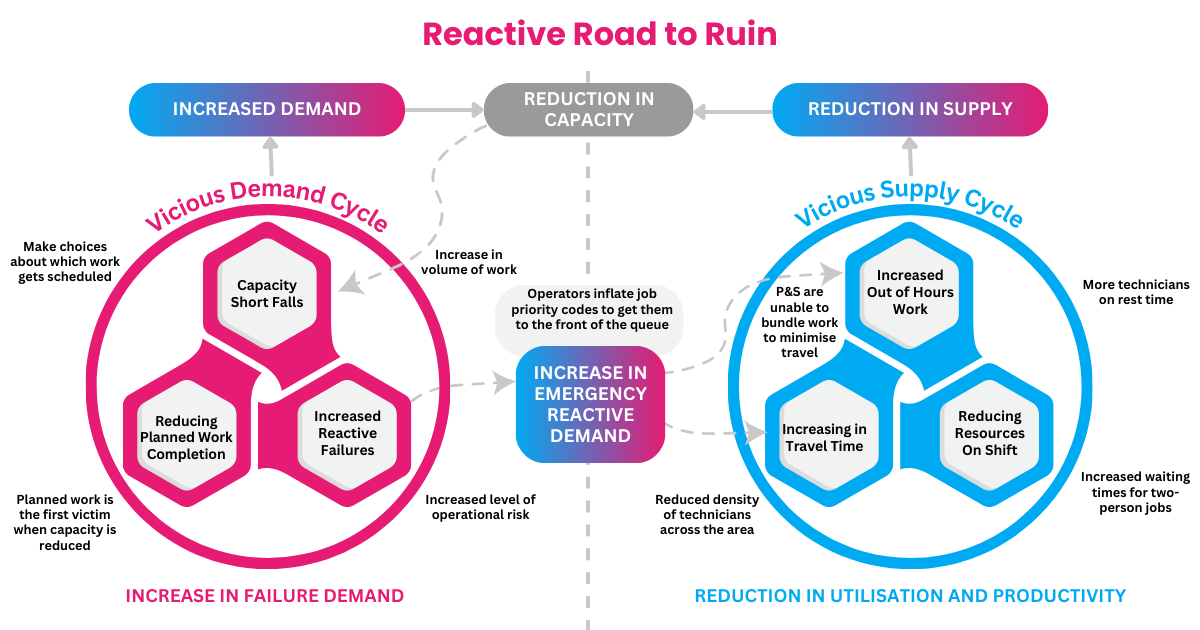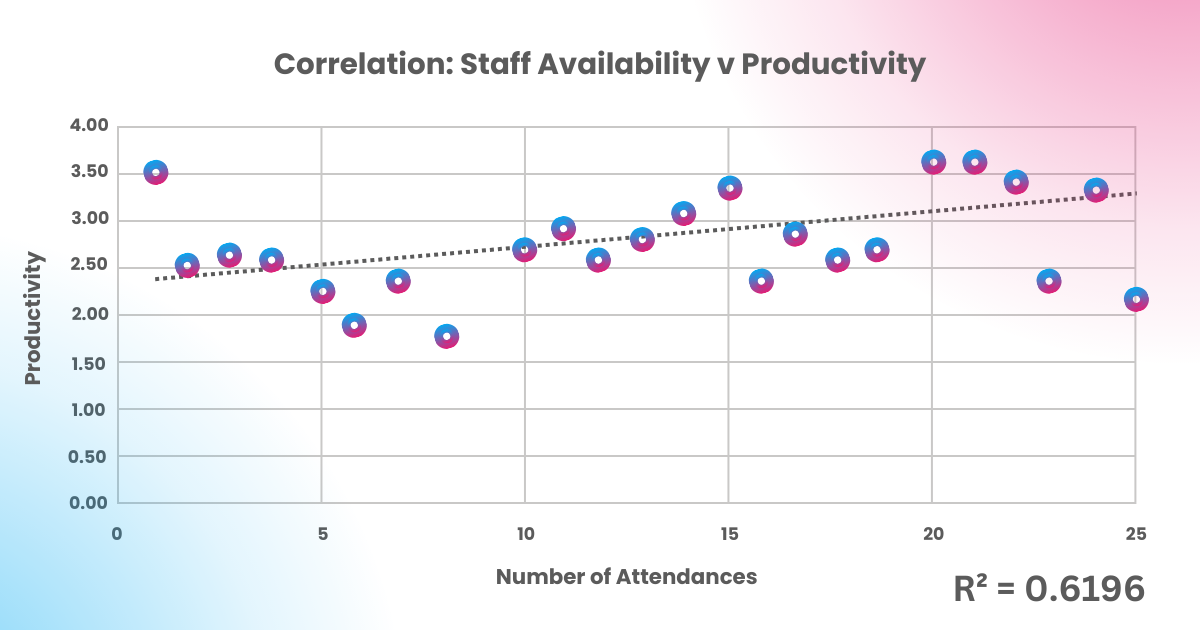Money for nothing?
Ok maybe not money, but how about increasing the capacity of your maintenance team by 15-20% with no additional headcount?
It’s that time of year when you have committed to getting fit; if, like me, you are not a spring chicken, this comes with some risk. Lacing up the trainers and heading out for a 10k run is more likely to result in a trip to the physio rather than the start of a fitness campaign.
So, in this analogy, I am the ageing asset, and I know that unless I warm up (planned maintenance) before a run, I will either struggle around (not operate as designed) or, worse still, injure myself (breakdown) and need physio (reactive maintenance).
Ok, I have stretched (no pun intended) the analogy enough.
Basic maintenance theory is well understood; if you proactively maintain your assets, they are less likely to break down. If you don’t, you run the risk that, at some point, you will pay the price, both literally and metaphorically.
However, most utility businesses operate with a maintenance backlog. Business leaders have accepted the risk associated with backlogs as they try to balance the competing needs of the business.
The challenge for maintenance managers comes when the backlog reaches the tipping point when the volume of reactive work impacts their ability to complete an adequate volume of proactive work. Over time, you experience increased reactive failures as assets are not maintained as planned work is always the first to be sacrificed when insufficient resources exist. This is what we call the Reactive Road to Ruin.

If only we had more people, we could manage the backlog and minimise compliance risk. Unfortunately, the magic money tree is extinct.
What if we said you already have enough people to burn down the backlog, but you need to think about the work from a different perspective? Fear not; we are not about to advocate a big drive on Job per Day!
Fundamentally, the challenge is often a lack of in capacity, due to an imbalance in work (demand) and resources to complete it (supply). Traditionally, we look to increase the supply side of the equation, that is, more people and an increase in Jobs per Day. If we want to create capacity, we must influence both sides of the equation.
We can pull multiple leavers to reduce the backlog, and a critical skill is to work out which ones will have the most significant impact.
Demand
In our experience, the demand side offers the greatest opportunity to create ‘balance’. Reactive jobs are often seen as a by-product of running an asset-intensive business, something we just need to get on and clear from the backlog. We need to reconsider this notion.
If we apply Lean Management principles and consider jobs in terms of Value or Waste, we can see that not all jobs are equal. A good example would be an asset that experiences multiple failures, i.e. breakdowns several times a year. Each time it breaks, it uses up valuable maintenance resources. Understanding the underlying cause and preventing further breakdowns will create additional capacity.
In a recent project, we found that, on average, assets were breaking down 2.9 times per year. A small number of these assets fail 5-20 times per year. Identifying and focussing on these high-impacting asset failures helped to push down demand.
Supply
We must look more broadly than productivity to improve the supply side of the equation. One of the areas utilities need to focus on is the active management of staff to maximise ‘Tool Time’’ each day.
Teams must maximise the resources available each shift:
- Control training and meetings.
- Smooth annual leave.
- Actively manage absence.
- Challenge out-of-hours callouts.
- Validate job priorities.
Teams should have a target number of people on shift daily based on agreed assumptions and measure and manage the reasons for deviations. Far too often, we see managers’ accepting’ the resources that arrive on shift.
Our analysis has shown that just focusing on maximising resources on shift every day can increase productivity. We have found a statistically significant correlation between attendance and productivity: the greater the number of maintainers on shift, the higher the average Job per Day, up to a point.

Only when we have maximised resources on shift can we focus on productivity. Measuring true productivity is an article in its own right and one we will return to in the future.
We also see across businesses with maintenance backlogs that reactive jobs get over-promoted; we often see over 50% of reactive jobs are raised as emergency work (<48 hours response). While operators believe this is the only way to get a maintainer on site, it kills productivity, making the capacity challenge even harder.
Creating Capacity
If we want to ‘take control’ of the work, we must create capacity by balancing supply and demand, pushing down demand by eliminating waste and elevating supply by maximising resource availability. Leaders need to ensure they and their teams have access to the right KPI reports that make the critical drivers of capacity visible so teams can work on improving performance using continuous improvement techniques.
How are your teams looking to address their backlogs? Do your teams understand the different types of demand? Are they focused on reducing wasteful demand? Is there a focus on maximising ‘Tool Time’ every day?
If you want to learn more about redressing the imbalance and how we demonstrate where you can create 15-20% additional capacity in 6 weeks, then please get in touch: dean.wheeler@reson8.group




